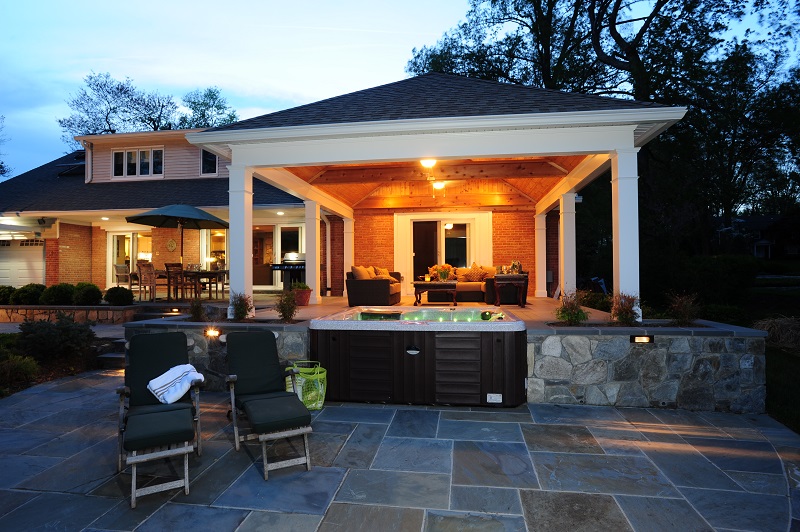.jpg?width=800&height=532&name=a_Porch_Deck_Patio_Emman_(5).jpg)
One element that’s becoming increasingly popular in outdoor living spaces is the hot tub. Especially in areas that experience cold winters, this can be an excellent addition to any outdoor area. It is, however, a very involved process and one you’ll need to carefully discuss and coordinate with your design build team. These are your top 8 steps and considerations for installing a hot tub in Virginia or Maryland.
Coordinate Water Runoff
The first step to any recessed hot tub is coordinating all water runoff by building a large pit in the backyard. This is the first element to discuss with your design team. If your yard can’t easily accommodate that kind of structure, a hot tub might be difficult, more costly, or even infeasible to install. 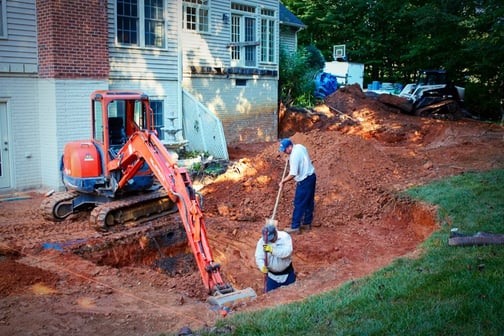
Dig the Hole
The average hot tub is about forty inches tall, so the construction crew needs to dig a hole large enough to accommodate that submerged tub. The hole should be just larger than the hot tub, so (depending on the specific hot tub) that could mean just over forty inches deep and somewhere around eight feet by nine feet for width and length.
Drains
Drains are obviously an important and necessary element in hot tubs, and the first such drain is installed in the bottom of the pit. This drain will run away from the hot tub, and it’s designed to catch any water that rushes in when it rains. If this drain isn’t incorporated into the design scheme, it can cause serious flooding issues. Any design build team that’s handled hot tubs before will likely advise the installation of this first drain.
The second drain is for when you’re getting rid of the water in the hot tub itself. When it’s time to cycle that hot tub’s water, there needs to be a substantial drain to catch that and carry it away.
Both drains need to be in convenient locations, which usually means two large drains are installed in the bottom of that dug pit.
Footer
The next crucial element of a hot tub installation is the footer. The hot tub needs to sit on a specific hot tub slab, which requires a specific and dedicated inspection of that concrete. That slab also needs to be bonded, so copper wiring is run through the concrete. Because this incorporates electricity, water, and a submerged structure, an electrical inspection is also required to ensure complete safety and proper installation.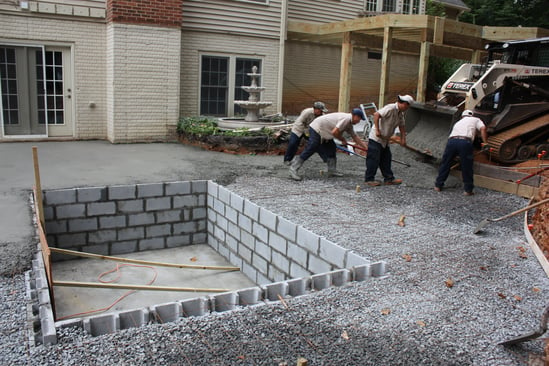
CMU Cinder Blocks
The next step is to build CMU cinder blocks up to the surface level of the ground. This creates a walled-in pit with two drains at the bottom and a bonded concrete slab for total electrical safety.
Trap Door
A hot tub will also need a trap door installed in order to properly service it, as there will be one panel to access for all repairs. Typically about thirty inches of working space is required in front of that panel for adequate access. There essentially just needs to be enough space to open that trap door and be able to work in the area effectively, so the specific size is something to consider—depending on who will be routinely accessing and servicing that panel. You also need to consider what side of the hot tub will be easiest to access the mechanical panel and install accordingly.
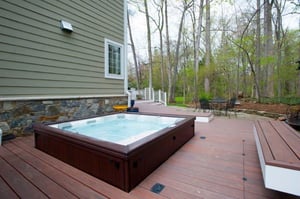
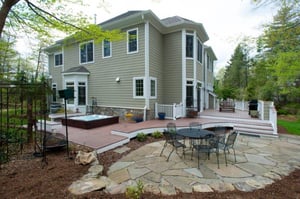
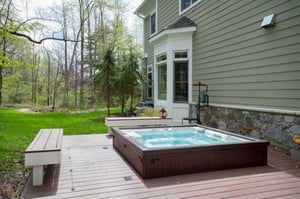
Electricity
After the hot tub has been dropped in place, then you need to ensure electricity is run out to that location. There are two important things to keep in mind regarding hot tubs and electricity—hot tubs run on their own circuits, and there needs to be emergency shut off boxes for those hot tubs.
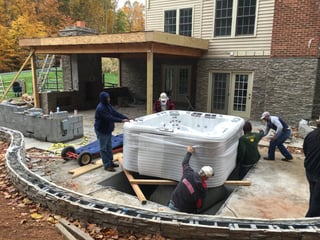
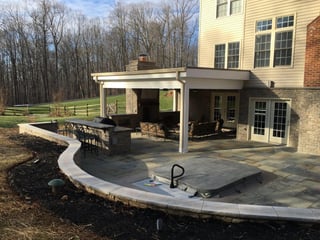
Hot Tub Covers
One of the last considerations is the hot tub cover. You need to choose whether it’s motorized or not, and you’ll also need to decide which way you want it to go. Whether you want the hot tub cover to face the house, the patio, or something else will affect which way it’s installed.
Hot tubs are certainly a process to install, but if you want this element in your outdoor space, experienced build teams can certainly work with you to find the best and easiest installation solutions.

